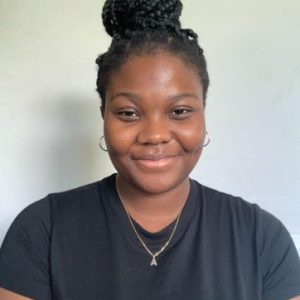I was thinking about all that happened in my personal life and the world over the last year; it shocked me how many changes occurred in such a short time. Many of them (and virtually all of the positive ones) would not have happened without a catalyst for change, such as the award-winning journalist and co-founder/CEO of URL Media, S. Mitra Kalita.
She understood there needed to be a change in the newsroom, as well as in her greater community. Mitra’s from Jackson Heights, Queens, a place of incredible diversity which The New York Times has called the “epicenter of the epicenter during COVID.” She proves it’s possible to recognize when something new is needed and create it, making a major difference.
During Managing Editor Live 2021, Mitra shared her experiences in some of the biggest newsrooms in the world, as well how the changes she has made working outside the system empowered her to carve out an entirely new career trajectory.
How She Started
Mitra began her career in various newsrooms including Newsday, The Washington Post, and The Wall Street Journal, to name a few—but it was during her time at CNN her professional trajectory unexpectedly shifted. She had been there for over four years when the global pandemic and the death of George Floyd forced people in newsrooms everywhere to have a reckoning.
Their audiences were challenging them on numerous fronts, from wondering if they were genuinely an objective source of information to questioning whether a news outlet could be serviceable or provide solutions. “All the things that have been questions and thorny questions in journalism forever, I think, really came to a head that spring of 2020,” recalls Mitra.
As a woman of color, Mitra had always tried to include diversity in her stories: “Diversity was always backed into my job even when it wasn’t in my title.” There was, however, an awakening among her mostly white colleagues. In the midst of all these crises, Mitra realized just how important it was to answer those overriding questions.
As mentioned, Mitra and her family live in Jackson Heights, Queens. Thanks in large part to her home, the pandemic caused Mitra to confront another question as well: “What are you doing now?”
Mitra says neighbors came to her for help in navigating all sorts of challenges, from finding a babysitter who had antibodies to understanding how to claim a body from the city morgue. (This involved a man who was an undocumented immigrant with no family; he turned out to be someone her husband knew.)
Recognizing how involved they were in their neighborhood and understanding what people in their community wanted, Mitra said to her husband, “We should do something.” Knowing that there were many things in Jackson Heights with which “CNN is not going to be able to help,” she launched a newsletter. That’s when Epicenter came to life.
The Struggle to Scale
Mitra’s newsletter took off quickly. But just as swiftly, problems emerged. Mitra began to “see the limits of scale on the internet.” It wasn’t a surprise to her, but it remained a massive challenge.
They needed to deal with SEO and Facebook algorithms changing every day. One day they might need a video that uses links. Then they would discover using too many links actually devalued their site and results. “Every day we make decisions based on scale, even when we’re tiny operations on the internet,” she says. She needed to think about how organizations like CNN Fox News “have been able to leverage scale.” The importance of doing this is undeniable: “It’s everything. It’s money, it’s power, it’s influence.”
Major news organizations did have one major drawback, however: Massive as they might be, they were still six weeks late on the stories people in her community needed to hear.
By contrast, Mitra’s newsletter could predict trends based on her micro-community in a way that has been incredibly valuable. Yet while Epicenter did an excellent job of sharing information with the community, Mitra understood that more needed to be done. URL Media was born from this idea, enabling Mitra and her team to scale together without sacrificing what they represent to their communities.
URL Media today is a network of nine Black and Brown media operations around the country, all sharing content. So when, for instance, Hurricane Ida hits New York, Epicenter can write about its devastating impact on basement apartments and the rest of the network can share this story around the nation. “So finally, we are starting to leverage the power of togetherness to really make a dent in spaces where mainstream media have really ridden outlets like Apple News and Facebook to great effect,” says Mitra.
Outside the System
Like many others, Mitra had always looked to the New York Times and other big institutions to reinvent the system. However, she came to recognize that if people were going to truly diversify newsrooms, they would need to step outside of it.
“We need to produce content that centers on the people who we are writing about, as opposed to writing for politicians and journalists and pretending we’re writing for these other communities,” Mitra explains.
She could have walked away from mainstream media entirely, but instead chose to form a partnership with them because while she is proud of what she built, she understood that mainstream media also needed to be a part of the change. “The core of my journalism is truly people and a belief that, in some ways, the answers are among us,” Mitra says, whereas too often in journalism the people are “being talked at or about.”
Change: Challenges and Chances
Many people struggle with change or even ignore it. Mitra says journalism is all about recognizing how things evolve: “If you’re a good journalist, you want to learn the world everyday and kind of try to absorb it anew,” That said, she recognizes adapting to change can be challenging. That’s why she offers two observations that have assisted her during complicated times:
- Be your genuine self, particularly when times are difficult. “You got to be who you are, and people seem to actually value that, once they know you’re not BSing them.”
- There should be a variety of types of people and personalities, including some who aren’t like you. “We often look for people like us. And actually, to effect change, you got to look for the people… not necessarily resistant to change, because that’s an obstacle, but who are the stabilizing influences in your newsroom, who get work done every day.”
To lead a company through change, leaders must understand that there is a constant learning curve. “When you’re trying to run an inclusive company that is inclusive in its content and inclusive in its outlook and what it means to the community, there has to be a meta-layer of how you’re leading,” shares Mitra. After all, one of the greatest challenges of creating a business that better serves its employees or community is achieving these goals while still succeeding as a business. Yet Mitra proves it is possible, reminding us that change can be tough but it also creates a chance for tremendous improvements.
Watch S. Mitra Kalita’s full session here.






